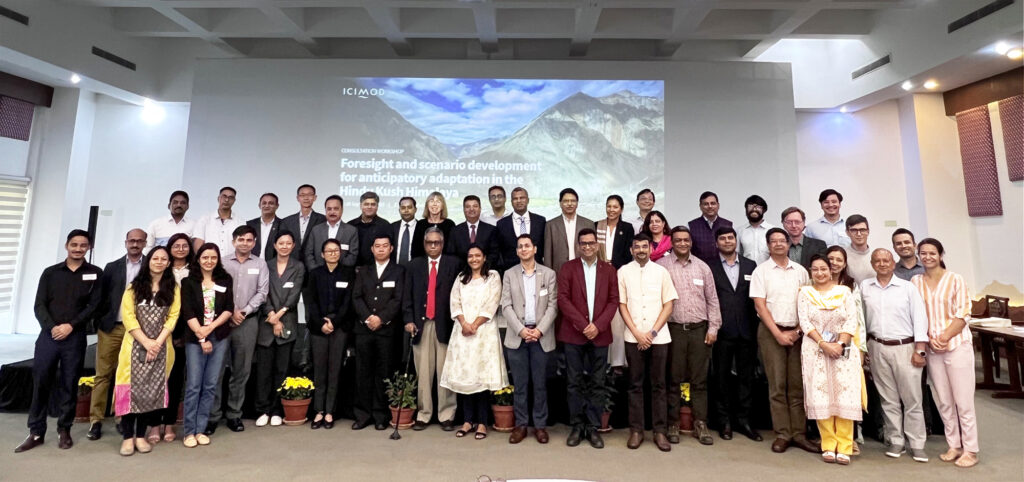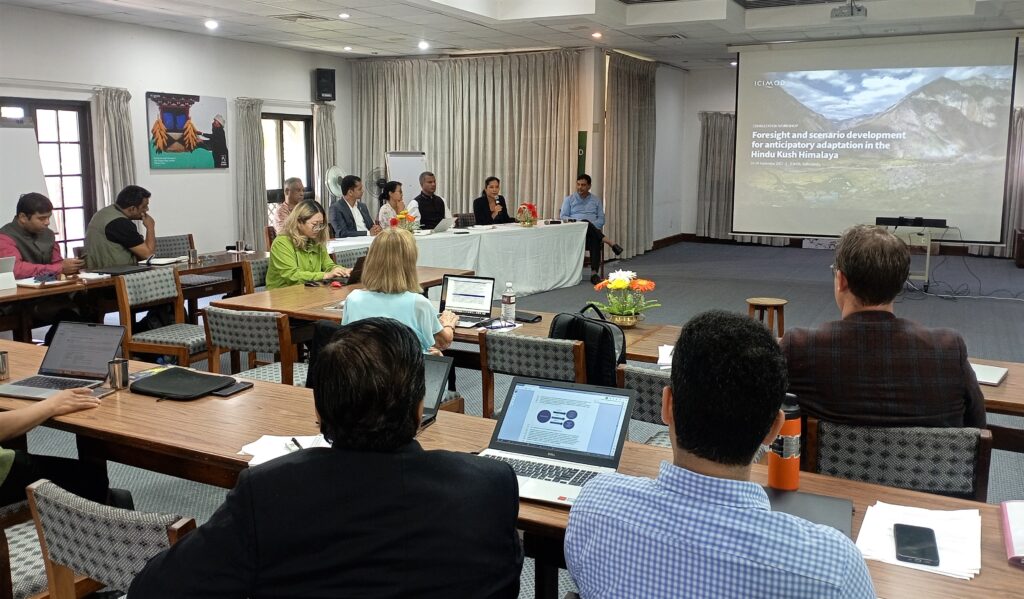By Amina Maharjan
Achieving the Sustainable Development Goals by 2030 is becoming ever more challenging in the Hindu Kush Himalaya (HKH), as the region grapples with the many complex and interconnected crises of climate change, biodiversity loss, food and water insecurity, and growing economic inequality, among others. We do not need a crystal ball to help us see what the future climate could hold in store for the people and environment of this region. It is already experiencing the devastating impacts of climate change, with new temperature and precipitation records continually being surpassed. More severe and frequent extreme weather events, such as droughts, floods, and avalanches are becoming the norm. For the HKH, elevation-dependent heating means that even a temperature increase of 1.5°C is too hot for the sustainable wellbeing of the region’s people and ecosystems.
If ‘business as usual’ and current emission trends continue, the HKH is on course to experience irreversible changes in its natural and social systems. Without enough food, water, or energy, life would be challenging for the millions of people who call the HKH home, and for some, it would simply be unliveable. It is vital that we start thinking about what kind of future we want to create and how we can act when the worst-case scenario thresholds are crossed. We need to plan for an uncertain future and be better prepared for these worst-case scenarios.
In order to brainstorm together on these shared uncertainties, over 40 participants representing 25 organizations from six countries in the region – Bangladesh, Bhutan, China, India, Nepal, and Pakistan – and beyond – Austria, Thailand, United Kingdom, United States of America – came together for a consultative workshop on ‘Foresight and Scenario Development for Anticipatory Adaptation in the Hindu Kush Himalaya’ on 19–20 September 2023, organized by the International Centre for Integrated Mountain Development (ICIMOD) in Kathmandu, Nepal. The participants included representatives from governments, international organizations, NGOs, think tanks, universities, and research institutions.

Over the two days, the participants engaged in a horizontal scanning exercise to look at potential changes/disruptors in the HKH region in the future. The group also looked at building capacity for foresight and futures thinking at different scales of planning – from national to local levels.
Foresight and scenarios are tools that can help us reimagine plural futures. They help us think about the future in systematic, rigorous, and inclusive ways. It involves identifying potential future trends and challenges in order to develop strategies to address them. This approach has not been used widely in this region, but that needs to change as we prepare for an uncertain future.

This gathering was the beginning of a process to encourage futures thinking in the region. Overall, there was consensus on the need for futures thinking across sectors and scales and a commitment to continue collaboration. As a participant from Bangladesh highlighted “We cannot only depend on the past (and historic trends) to plan our future under the rapid change and uncertainty that we are witnessing in the region. It is critically important to envision futures at different scales and with diverse stakeholders to drive our actions now.” Without foresight and scenarios thinking, no organisation or community can remain future fit.
Such planning is especially crucial for a region as vulnerable as the HKH – subject not only to the extremities of its geography and topography, but also because of its varied social, demographic, political and economic conditions. Just one major weather event can set communities back 20 years in development. We must think creatively and long-term about how to address the major challenges, and we must do it now.